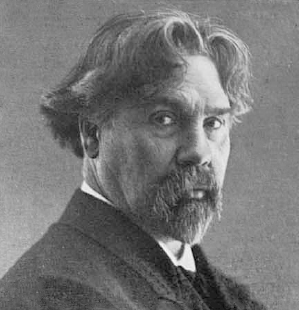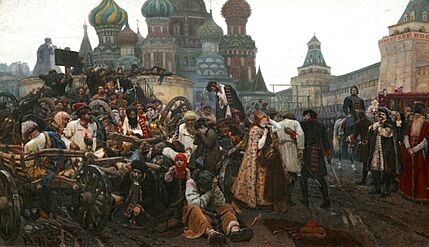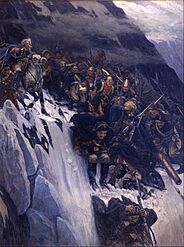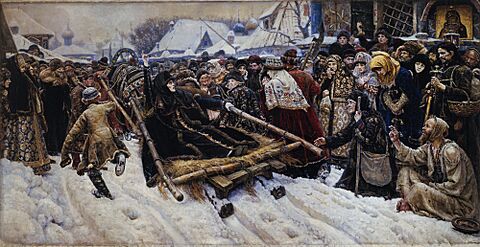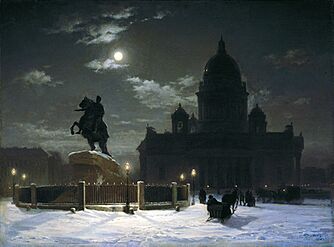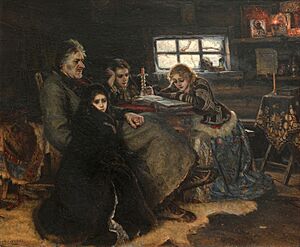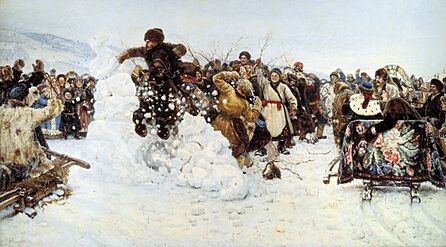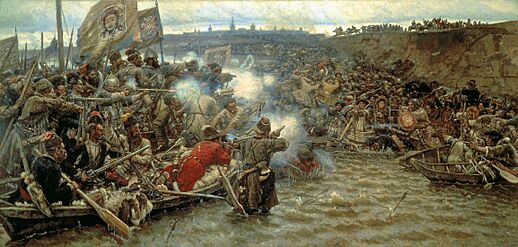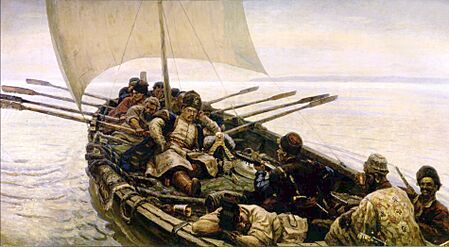Vasily Surikov facts for kids
Quick facts for kids
Vasily Surikov
|
|
|---|---|
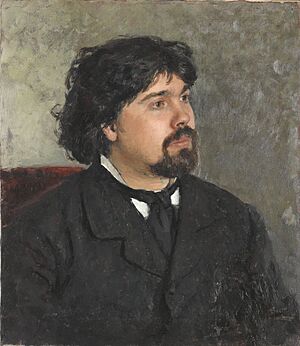
Portrait of Vasily Surikov by Ilya Repin (1877)
|
|
| Born | 24 January 1848 Krasnoyarsk, Yeniseysk Governorate, Russian Empire
|
| Died | 19 March 1916 (aged 68) Moscow, Russian Empire
|
| Resting place | Vagankovo Cemetery, Moscow |
| Nationality | Russian |
| Education | Member Academy of Arts (1895) Full Member Academy of Arts (1893) |
| Alma mater | Imperial Academy of Arts (1875) |
| Known for | Painting |
|
Notable work
|
The Morning of the Streltsy Execution (1881) Boyarynya Morozova (1887) |
| Movement | Realism, History painting
Peredvizhniki |
| Awards | Four Silver Medals |
| Patron(s) | Pavel Tretyakov |
Vasily Ivanovich Surikov (Russian: Василий Иванович Суриков; born January 24, 1848 – died March 19, 1916) was a famous Russian artist. He was known for his amazing historical paintings, which showed important moments from the past. His artworks are so well-known that many people have seen them used as pictures in books and other places.
Contents
Vasily Surikov's Life Story
Vasily Surikov was born in Krasnoyarsk, a city in Siberia, Russia. His family belonged to the old Yenisey Cossack group, who were like special soldiers and settlers. They had moved to Siberia a long time ago. Vasily's father worked for the government.
Early Life and Art Dreams
In 1854, when Vasily was young, his family moved to a village called Sukhobuzimskoye. He started school there. Sadly, in 1859, his father passed away from a sickness called tuberculosis. The family moved back to Krasnoyarsk and had to rent out part of their house to make enough money.
Vasily loved to draw even when he was in school. His art teacher saw his talent and encouraged him. By 1862, he had created his first official artwork. However, his family couldn't afford to send him to art school. So, Vasily became a clerk in a government office.
This job helped him meet Pavel Zamyatin, who was the governor of the Yenisei region. The governor helped Vasily find someone to support his art studies. This person was Pyotr Kuznetsov, a rich local merchant who owned gold mines.
Studying Art in Saint Petersburg
In 1868, Vasily traveled a long way on horseback to Saint Petersburg, a big city. He wanted to join the Imperial Academy of Arts, a famous art school. But he didn't get in right away. Instead, he studied at a drawing school run by the Imperial Society for the Encouragement of the Arts.
After a year, he was allowed to attend classes at the Academy. By the end of 1869, he became a full-time student. From 1869 to 1875, he learned from great teachers like Pavel Chistyakov. Vasily was very good at arranging things in his paintings, which is called composition. Because of this, his friends called him "The Composer." In 1875, he finished his studies and became a first-degree artist.
Moving to Moscow and Famous Paintings
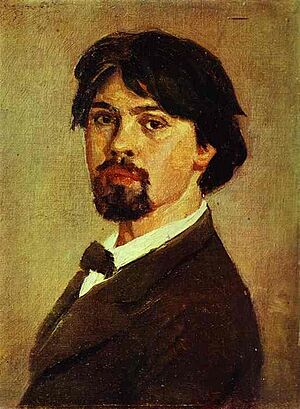
In 1877, Vasily got an important job: to paint murals for the Cathedral of Christ the Saviour in Moscow, which was still being built. So, he moved to Moscow. He lived in rented places and visited his hometown, Krasnoyarsk, whenever he could. In 1878, he married Elisabeth Charais, who had French family roots. They had two daughters.
After moving to Moscow, Vasily started painting the large historical artworks that made him famous. One of his first big paintings was The Morning of the Streltsy Execution. In 1881, he showed his work for the first time with a group of artists called the Peredvizhniki.
In 1883, a famous art collector named Pavel Tretyakov bought Vasily's painting Menshikov in Beryozovo. The money from this sale allowed Vasily to travel around Europe. In 1887, he also started painting portraits, beginning with one of his mother.
Later Years and Legacy
In 1888, Vasily's wife passed away. He went back to Krasnoyarsk with his daughters for two years. During this time, he painted a cheerful picture called The Capture of Snow Town. He also visited his family's old home in Siberia. There, he made drawings for one of his most well-known paintings, The Conquest of Siberia by Yermak Timofeyevich. Some of his own ancestors had even been part of this historical event! This painting helped him become a full member of the Imperial Academy. In 1897, he visited Switzerland and painted Suvorov Crossing the Alps, which was bought by Tsar Nicholas II.
In 1907, he joined a new group called the Union of Russian Artists. Three years later, he visited Spain with his son-in-law, Pyotr Konchalovsky. That same year, he and an architect named Leonid Chernishyov opened an art school. Four years later, he spent a long time in Krasnoyarsk, painting beautiful landscapes.
By this time, Vasily was dealing with heart problems. He went to Crimea for treatment in 1915, but it didn't help much. He passed away early the next year after returning to Moscow. He was buried next to his wife in Vagankovo Cemetery.
In 1948, on the 100th anniversary of his birth, Vasily Surikov's home in Krasnoyarsk became a museum. Two statues have been put up there to honor him. A movie about his life, called Vasily Surikov, was made in 1959. Many streets and squares in Russia are named after him, and there's even a crater on Mercury named in his honor.
Principal Works
-
Menshikov in Beryozovo
See also
 In Spanish: Vasili Súrikov para niños
In Spanish: Vasili Súrikov para niños


